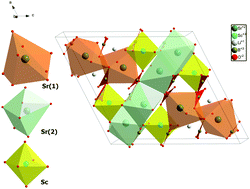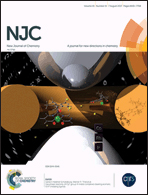Site-selective Eu3+ luminescence in Sr2ScLi(B2O5)2
Abstract
New pyroborate Sr2ScLi(B2O5)2 (SSLBO) doped with Eu3+ has been synthesized for the first time by the conventional solid-state method and investigated by spectroscopic means. At 300 K the material exhibits strong orange-red luminescence with a maximum at 613.5 nm. At 5 K the spectra of Eu3+ at different Sr sites can be distinguished by using different excitation wavelengths – 395 nm and 405 nm. The O2+–Eu3+ charge transfer transition in the absorption spectrum has a maximum at 260 nm and 245 nm for 2% and 0.1% Eu3+, respectively. The luminescence radiative decay time of Eu3+ at Sc, Sr(1) and Sr(2) sites is 4.6 ms, 1.4 ms and 2.6 ms, respectively. The energy transfer resulting from dipole–dipole interactions has been analyzed using the Inokuti–Hirayama model and R0 is calculated to be 12.7 ± 1.6 Å.



 Please wait while we load your content...
Please wait while we load your content...